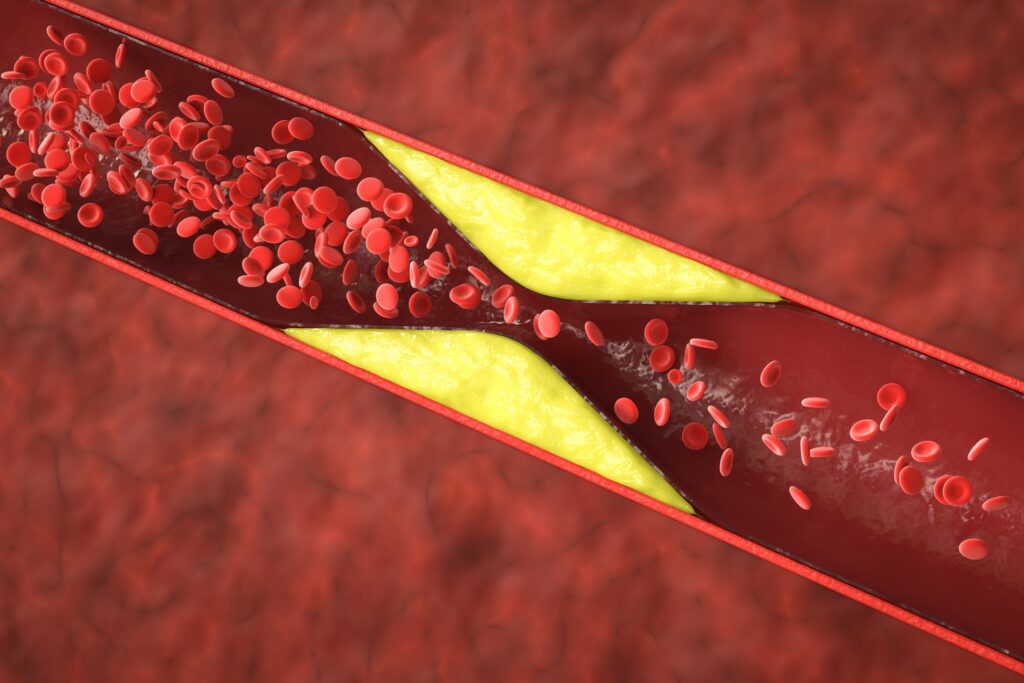Introduction
What is hyperlipidemia, and why should it concern you? Many people hear this term during routine checkups or health discussions but don’t fully grasp its significance. Hyperlipidemia involves having high levels of fat, or lipids, like cholesterol, in the blood. This condition is a growing public health issue. Understanding what causes hyperlipidemia and its treatment is vital for everyone.
Recognizing the causes and risk factors not only helps in preventing severe complications but also enables us to make informed lifestyle changes to manage it effectively. Unfortunately, hyperlipidemia acts silently and might not show clear signs until serious damage occurs. Like in many health-related situations, awareness is the first step towards prevention.
Understanding Hyperlipidemia
Hyperlipidemia refers to high lipid levels in the blood. Lipids include fats like cholesterol and triglycerides, which are crucial for normal body functions. Cholesterol helps in building healthy cells, but too much can lead to health issues.
The body needs lipids to function, but excess can damage cardiovascular health. When there are too many lipids, they can get stored in artery walls, leading to atherosclerosis, a condition where arteries become narrow due to plaque buildup. This restricts blood flow, increasing the risk of heart attacks and strokes.
Understanding what causes hyperlipidemia can help us avoid these pitfalls and lead healthier lives.
Types of Hyperlipidemia
Hyperlipidemia is broadly classified into:
- Primary Hyperlipidemia: Often inherited, it results from genetic factors.
- Secondary Hyperlipidemia: Lifestyle choices or other medical conditions lead to this type.
Each type requires understanding and managing its source to tackle the problem effectively.
Why is Hyperlipidemia a Concern?
Hyperlipidemia isn’t just about high cholesterol levels; it’s a precursor to serious conditions like heart attacks and strokes. The early stages of hyperlipidemia are often silent, showing no noticeable symptoms. Many people live unaware until they face a serious health crisis.
According to health statistics, a significant portion of the population is affected by high cholesterol levels. Hence, understanding what is hyperlipidemia and why it is a concern becomes imperative for everyone wishing to maintain health and well-being.
Exploring the Causes of Hyperlipidemia
Many factors contribute to hyperlipidemia. Here are some common ones:
- Dietary Choices: Consuming foods high in saturated fats and cholesterol can increase lipid levels.
- Sedentary Lifestyle: Lack of physical activity leads to weight gain and higher lipid levels.
- Obesity and Related Conditions: Overweight individuals, or those with diabetes or thyroid problems, often have higher cholesterol levels.
- Genetic Predispositions: Some people are more prone due to inherited conditions.
- Age and Medications: Aging increases the body’s cholesterol production, and some medications can also affect lipid levels.
Addressing these causes by making dietary changes, being more active, and understanding one’s family health history can reduce the risk of developing hyperlipidemia.
Identifying Risk Factors
Several factors can increase the risk of developing hyperlipidemia:
- Age and Gender: Cholesterol levels can rise with age, and men usually have higher levels until women reach menopause.
- Family History: Genetic factors play a significant role in a person’s risk.
- Lifestyle Choices: Smoking and alcohol consumption can negatively affect lipid levels.
- Ethnic Variations: Some ethnic groups are predisposed to higher cholesterol levels.
Knowing these risk factors helps tailor personal health strategies and treatment for hyperlipidemia.
Recognizing the Rare Signs and Symptoms
Hyperlipidemia typically does not present clear symptoms, which is why it’s often called a silent condition. However, in some severe cases, visible signs like xanthomas—fatty deposits under your skin—may appear. Advanced complications might include symptoms related to heart disease.
It’s crucial to be aware and have regular health checks, especially when risk factors are present.
Diagnosing Hyperlipidemia
Regular blood tests are key to detecting hyperlipidemia. These tests measure cholesterol and triglyceride levels in the blood. Staying informed about when to get these tests can be lifesaving.
Guidelines suggest that adults should have their cholesterol checked every 4-6 years. It’s important to understand your lab results, especially the cholesterol and triglyceride numbers, and discuss them with a healthcare provider.
Proactive Prevention and Lifestyle Strategies
Here are some lifestyle strategies to prevent hyperlipidemia:
- Diet: Opt for foods low in saturated fats and cholesterol. Incorporate fruits, vegetables, and whole grains.
- Exercise: Regular physical activity, like walking or swimming, helps maintain healthy lipid levels.
- Weight Management: Keeping a healthy weight can improve overall health.
- Lifestyle Changes: Limiting smoking and alcohol consumption supports better heart health.
By implementing these strategies, individuals can reduce their risk and manage their health proactively.
Conclusion and Call to Action
In summary, knowing what is hyperlipidemia and its impacts is crucial for everyone. This knowledge underscores the importance of awareness and implementing lifestyle changes. Regular screening is vital for early detection and prompt treatment.
We encourage everyone to consult healthcare professionals to create personalized health plans. Understanding what causes hyperlipidemia and what is the treatment for hyperlipidemia empowers each of us to take charge of our health effectively.
Take control of your heart health today with Kurnool Cardiac Centre. Consult our experts to create a personalized plan for managing hyperlipidemia and reducing cardiovascular risks. Book your appointment now and step towards a healthier heart!

